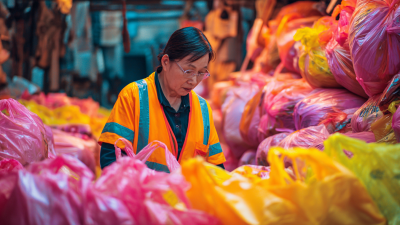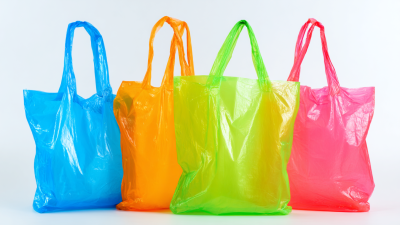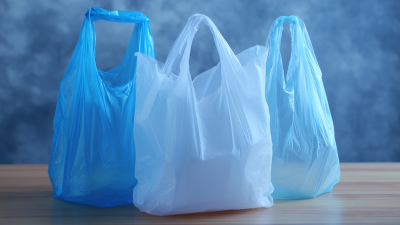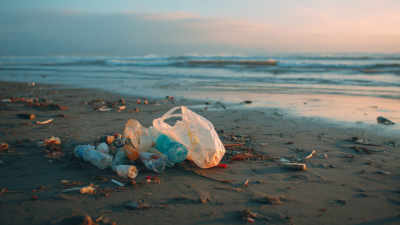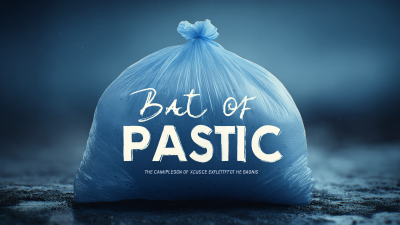- Phone:+86 15218629499
- Phone: +86 15766990063
- E-mail: Yzprinting01@163.com
As we look forward to 2025, the packaging industry stands at a crucial juncture, increasingly prioritizing sustainable solutions to address environmental concerns. The "Bag Of Plastic" sector is particularly significant as it strives to innovate and incorporate eco-friendly materials that reduce reliance on single-use plastics. Industry expert Dr. Emily Carter, a prominent figure in sustainable packaging research, emphasizes the need for transformative change by stating, "Creating a truly sustainable Bag Of Plastic is not just about replacing traditional materials but rethinking the entire lifecycle of packaging."
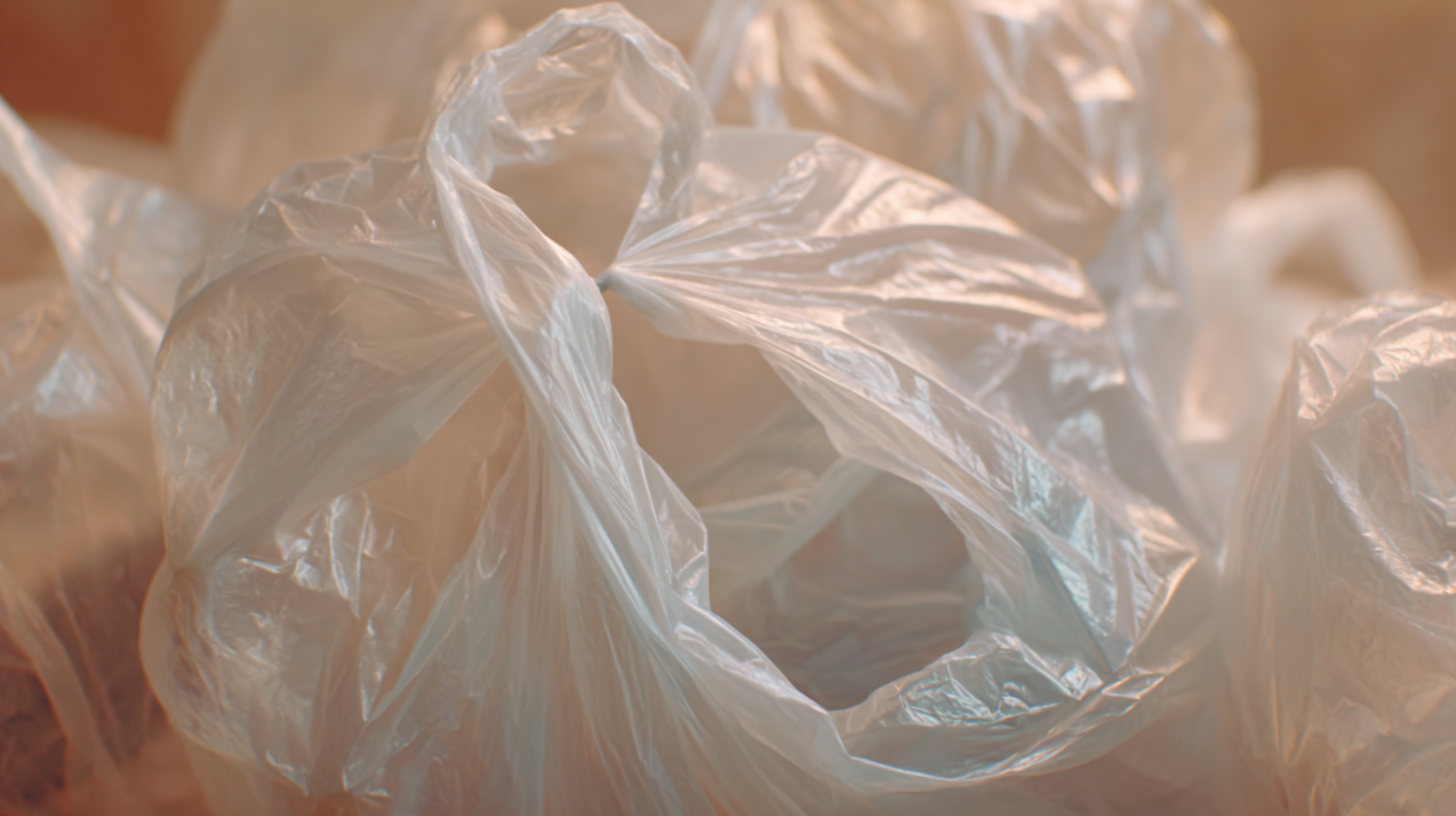
In response to the mounting pressure for environmentally responsible practices, companies are exploring inventive alternatives that combine functionality with sustainability. The emergence of bio-based plastics and recyclable materials presents opportunities to reduce the ecological footprint of packaging solutions. As we delve into the top five trends for eco-friendly "Bag Of Plastic" solutions, it becomes clear that the industry’s commitment to sustainability is not merely a trend but a necessity for a healthier planet.
Ultimately, the future of packaging lies in the hands of innovators willing to challenge the status quo. By adopting practices that prioritize the environment, the "Bag Of Plastic" sector can lead the charge toward a more sustainable and responsible approach to packaging, aligning with consumer demand for greener alternatives and paving the way for a more sustainable future.
The increasing awareness of environmental concerns has led to a significant shift towards biodegradable alternatives to plastic packaging. Innovative materials such as plant-based bioplastics, which are derived from renewable resources like corn starch and sugarcane, are becoming popular choices for businesses seeking sustainable solutions. These materials not only decompose more quickly than traditional plastics but also reduce the reliance on fossil fuels, allowing companies to minimize their carbon footprint while addressing consumer demands for eco-friendly options.
Additionally, advancements in material science are fostering the development of new biodegradable composites that combine natural fibers with biodegradable resins. These composites offer enhanced durability and functionality, making them suitable for a wide range of applications, from food packaging to consumer goods. The exploration of other innovative materials, such as mycelium and seaweed-based packaging, is also gaining traction, promising sustainable solutions that are both effective and environmentally friendly. As industries adapt to these exciting developments, the potential for a significant reduction in plastic waste becomes a more attainable goal.
In the quest for sustainable packaging solutions, the focus on multi-functional and reusable designs has never been more critical. The emergence of innovative products, such as the reusable chewing gum container developed by designer Dorcas Chu, exemplifies how creative design can effectively address environmental issues like littering. This container not only serves its primary function of holding gum but is also designed to encourage responsible disposal, offering users an eco-friendly alternative that merges practicality with sustainability.
Such advancements in packaging design emphasize the importance of versatility. By crafting products that can be reused and serve multiple purposes, designers are not just minimising waste but also promoting a culture of sustainability. The integration of functionality into packaging encourages consumers to rethink their habits, choosing reusable options over single-use items. This shift not only benefits the environment but also aligns with the growing demand for products that contribute positively to sustainability goals in packaging.

Consumer awareness plays a pivotal role in the promotion of sustainable choices, especially in the context of packaging solutions. As eco-consciousness grows, education emerges as a powerful tool to inform individuals about the environmental impacts of their purchasing habits. Schools, communities, and online platforms are increasingly seeing initiatives that focus on teaching consumers about the importance of sustainable materials, such as biodegradable plastics and reusable bags. By understanding the long-term benefits of these eco-friendly options, consumers can make informed decisions that contribute to a healthier planet.
Furthermore, the effectiveness of educational efforts can be amplified through innovative campaigns that engage consumers on multiple levels. Interactive workshops, social media initiatives, and collaboration with influencers can help demystify sustainable practices. When people are equipped with knowledge, they are more likely to demand products that align with their values. This shift in consumer behavior not only drives market demand for sustainable packaging solutions but also encourages businesses to adopt more responsible practices. Consequently, fostering consumer awareness through education is not just beneficial—it's essential for a sustainable future.
As the world increasingly prioritizes sustainability, government regulations surrounding plastic use are rapidly evolving. Policymakers are implementing measures aimed at reducing plastic waste and encouraging the adoption of eco-friendly alternatives. Understanding these changes is essential for businesses looking to navigate this complex landscape. Regulations can vary greatly by region, with some places enforcing strict bans on single-use plastics while others focus on incentivizing recyclable packaging materials. Companies must keep a close eye on emerging laws that not only affect their operations but also shape consumer preferences towards more sustainable options.
Tips: Stay informed about local and international regulations by subscribing to industry newsletters and following relevant government announcements. Engaging with local government initiatives can also provide early insights into upcoming regulations that may impact your business.

To meet these changing demands, businesses should also consider the benefits of collaboration. Partnering with organizations committed to sustainability can amplify efforts to reduce plastic usage and enhance public perception. By working together, stakeholders can develop innovative packaging solutions that comply with regulations while appealing to environmentally conscious consumers.
Tips: Explore alliances with sustainability-focused nonprofits or join industry coalitions that promote environmentally friendly practices. This collaboration not only helps in compliance but also fosters creativity in developing effective plastic solutions.
The concept of a circular economy is pivotal in addressing the challenges posed by plastic waste in our modern world. By shifting our focus from a linear model of production and consumption to one that emphasizes recycling and upcycling, we can minimize waste and promote sustainable practices. One of the key strategies for recycling plastic packaging materials involves improving collection and sorting systems. Enhanced infrastructure ensures that more plastics are captured and directed towards recycling facilities, ultimately reducing the volume that ends up in landfills and oceans.
Upcycling presents another innovative solution in the realm of sustainable packaging. By creatively reimagining discarded plastic materials, businesses can transform waste into new products with added value. This approach not only reduces reliance on virgin plastics but also encourages consumers to engage in sustainable practices. Companies are increasingly investing in technologies and methods that enable the conversion of plastic waste into high-quality, usable materials, thus contributing to a more sustainable and responsible lifecycle for packaging products. Embracing these strategies helps to build a resilient ecosystem that benefits both the environment and the economy.
| Trend | Description | Impact on Circular Economy | Recycling Rate (%) | Upcycling Opportunities |
|---|---|---|---|---|
| Biodegradable Plastics | Plastics that break down naturally over time. | Reduces landfill waste. | 30 | Composting and organic materials. |
| Recycled Content Packaging | Packaging made from previously used materials. | Promotes a closed-loop system. | 50 | Art projects and construction materials. |
| Reusable Packaging | Durable packaging that can be used multiple times. | Reduces overall plastic production. | 70 | Retail carry bags or storage solutions. |
| Plant-Based Plastics | Plastics made from renewable resources. | Decreases reliance on fossil fuels. | 20 | Biodegradable products and composting. |
| Smart Packaging | Packaging that contains technology for tracking. | Enhances recycling efficiency. | 40 | Interactive consumer experiences. |
